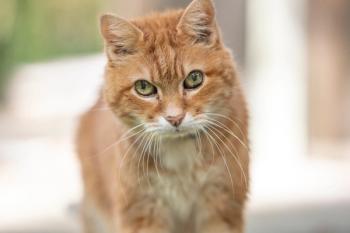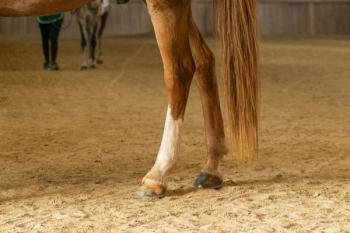
Canine hip dysplasia diagnosis and treatment (Proceedings)
The diagnosis of hip dysplasia is commonly practiced but in my opinion is frequently misunderstood.
The diagnosis of hip dysplasia is commonly practiced but in my opinion is frequently misunderstood. First, one must determine and separate if the patient has clinical disease and or radiographic disease. Clinical disease must be determined using a physical exam and patient history and is mostly dependant upon finding pain while extending the hip joints. A positive Ortoloni sign, while useful information when establishing that a dog has abnormal hips, does not mean that the patient is clinically affected by the hip laxity. Radiographic disease can be simply summarized at the presence of hip laxity and or idiopathic hip osteoarthritis. Several radiographic techniques have been described and the merits of each will be discussed but in the speakers opinion the current science supports the use of the PennHIP method.
The treatment for dogs with canine hip dysplasia (CHD) included nonsurgical management, femoral head and neck excision (FHO), triple pelvic osteotomy (TPO), total hip replacement (THR) and pubic symphysiodesis (PS). Many other treatments have been mentioned in various reports but have not faired well when objectively evaluated. These include pectineal myectomy, BOP/Shelf arthroplasty, varus or derotational osteotomy, femoral neck lengthening, sacroiliac wedge rotation, and darthroplasty.
Prior to recommending surgical management for any condition it is important to understand and communicate to the owner the likely outcome with non-surgical management. Non-steroidal anti-inflammatory medications such as Deracoxib, Rimadyl, Etogesic and Ascriptin should provide some relief for the inflammation of the hip joint associated with CHD. Rimadyl and etogesic are FDA approved for pain and inflammation associated with arthritis in dogs. Recently, cyclooxygenase II specific inhibitors have been reported on in the dog for acute perioperative pain and chronic arthritis. Clinicians should not expect COX-II specific inhibitors to provide greater, although some publications suggest this to be true, relief but it can be expected that patients that use them will have fewer clinically relevant side effects. Finally, it should be noted that naproxen (Aleve) has a 7-day half-life in the dog and should be avoided.
Glycosaminoglycans such as Adequan and Cosequin have been classified as joint modulating drugs. Lust et al. published that in skeletally immature Labradors predisposed to CHD Adequan provided some protection to the hip joint biochemically. In a clinical paper in dogs with established arthritis, however, de Haan found no treatment effect. Empirically, I have had little success using these medications.
Physical therapies such as swimming and daily leash walks are an important for maintenance of hip joint range of motion and limiting periarticular fibrosis. In a recent paper, however, it is important to note that range of motion during swimming was not greater in the hip joint when compared to range of motion during a walk or trot. This was different than other joints evaluated. Perhaps the greatest benefit to physical therapy is the caloric requirement necessary to perform the activity. Several recent papers have described that thin dogs perform better than overweight dogs and overweight dogs that lose weight (reduction in body condition score) have improved limb function. Obviously, dietary management must compliment this.
Two peer-reviewed publications address the outcome in patients with CHD that were treated with nonsurgical management. The likelihood of satisfactory pet function is reported to be between 80-85%.
Femoral head and neck excision is inexpensive and technically simple. Dogs that have FHO do have a loss of limb length that might contribute to lameness. They also have limited function, reduced ROM, and unsatisfactory results can be worse than pre-op function. The likelihood of success is not reported but when normal Greyhounds had FHO performed they had only 75% of normal limb function 4-months after surgery. Many surgeons perform muscle flaps (biceps, semitendinosis, deep gluteal) with FHO with some manuscripts reporting that they do better and some reporting that dogs do worse with muscle flaps. Finally, most surgeons are reluctant to revise a failed FHO or to perform THR after FHO. In a case series of 3 cases dogs that had THR after failed FHO did well.
The majority (90-95%) of dogs that have TPO performed have a satisfactory outcome at 12 months and it is reported that 95% have a satisfactory outcome at 5 years. TPO does alter the degenerative process but most reports suggest that arthritis progress to some degree in nearly all cases. Complications associated with TPO such as screw loosening typically do not lead to clinically relevant problems however it is reported that 1% of dogs that have TPO will have sciatic nerve paralysis. The main disadvantage to TPO is that the equipment and expertise needed lead to a great expense for the owner. The technique is also quite invasive and usually needed on both hips. Case selection continues to lead to the greatest controversies with some surgeons suggesting that patients have a "window of opportunity" to have the procedure performed. To date, there is no literature to suggest that this is the case. The indications for surgery (degree of laxity, DJD, age) continue to be debated. Until this debate is made clear it would be wise not to put owners of dogs with CHD in a situation where they feel pressured to make an immediate decision.
THR continues to be the state of the art therapeutic option for dogs that have CHD and moderate to severe arthritis. 90-95% of dogs that have THR will have a satisfactory outcome at 5 years. Again the biggest problem with the procedure is the expense, equipment, expertise required to have it performed. Luxation, infection and aseptic loosening are the three most common complications and generally require removal or revision of the implant(s). Dogs that are going to have THR must be skeletally mature. THR can be successfully performed after failed FHO or TPO but owners must be warned that the prognosis is a bit more guarded and they would be wise to find a surgeon experienced with THR. On reexamination, if performed at the referring veterinarian's office, it is important to note that 70% of case will have radiolucent line at the cement-bone interface. Although this is not normal, it is common and only is associated with clinical problems if the line should increase in width.
Pubic symphysiodesis is a comparatively new technique that aims to fuse the pubic symphysis in skeletally immature dogs with hip laxity that are predisposed to CHD. With the symphysis fused continued growth from ilium and ischium results in ventroversion of acetabulum. In effect, this is the same outcome as TPO. To date we know that PS increases acetabular ventroversion, it is inexpensive, simple, has few potential complications and treats both hips at the same time. However, PS must be performed by 4-5 months of age and must be a used as a preventative procedure. We need clinical data to determine if PS has clinical merit. This will require a large, prospective clinical study that focuses on a single breed of dog and follows cases that are not only treated with PS but are treated nonsurgically. This is critical since the procedure is not used as a therapeutic but as a preventative. Other debates about PS include how much rotation can be achieved, should electrocautery or stapling be performed, do dogs need to be neutered at the same time, and what are the indications for surgery (degree of laxity, age of animal, how to determine they are predisposed to CHD).
Newsletter
From exam room tips to practice management insights, get trusted veterinary news delivered straight to your inbox—subscribe to dvm360.





